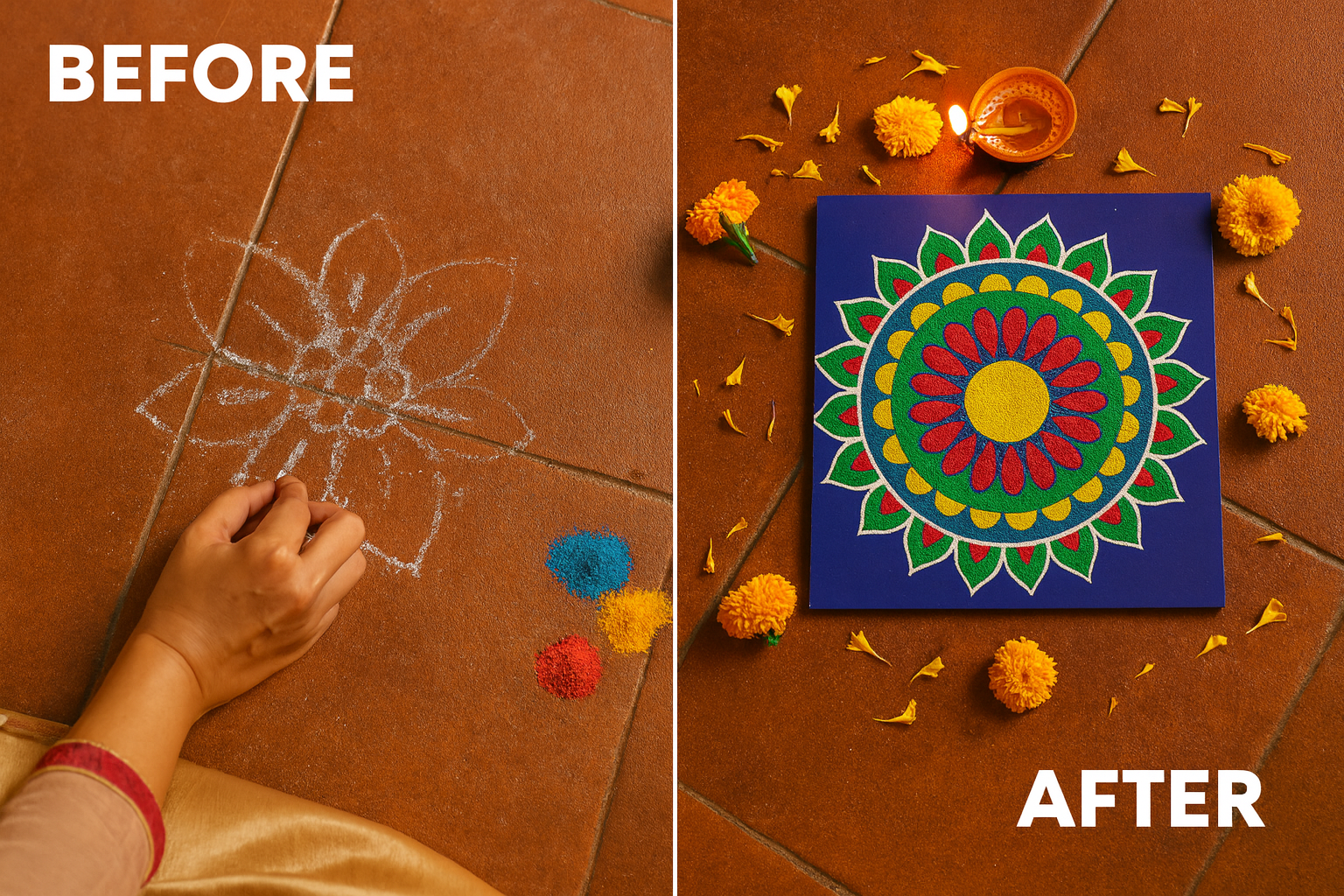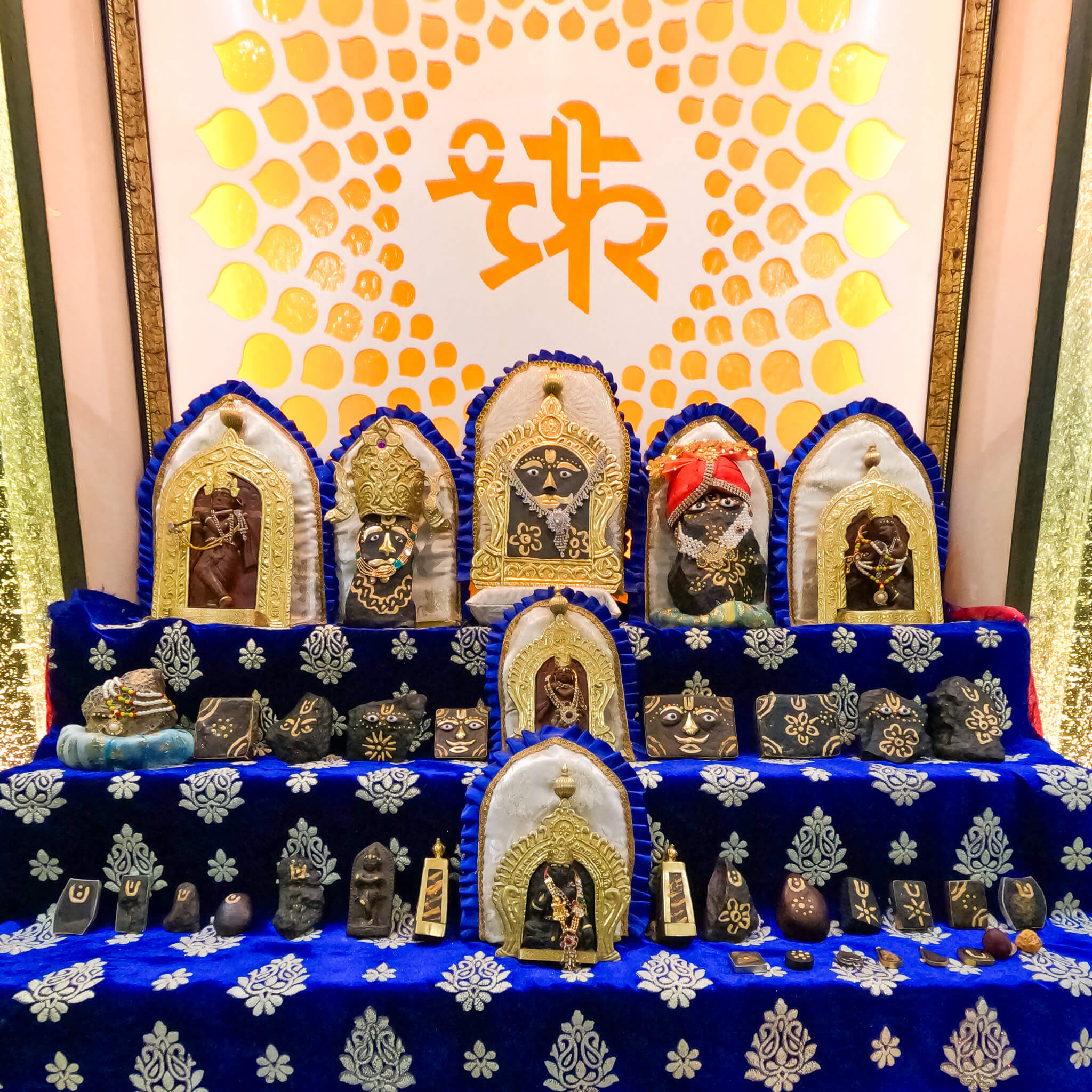Across the vibrant landscape of Indian festivals, one tradition continues to weave joy, devotion, and culture into a single thread the timeless art of Rangoli. More than just beautiful designs at our doorsteps, rangolis are sacred expressions of celebration. From Diwali to Holi, each festival brings with it a unique rangoli style, honoring the spirit of the occasion while connecting generations through creativity.
Rangoli for Diwali: Lighting Up the Threshold of Prosperity
During Diwali, the Festival of Lights, homes come alive with intricate Diwali rangoli designs. Patterns often feature Lord Ganesha and Goddess Lakshmi, symbolizing prosperity and divine blessings. Drawn with bright rangoli colours such as red, yellow, orange, and green, these rangolis are often surrounded by glowing diyas, adding warmth, light, and spiritual depth to the artwork.
Rangoli for Makar Sankranti: Inviting Abundance with the Sun God
As winter retreats and harvest season begins, Makar Sankranti is celebrated with rangolis inspired by Surya, the sun god. Traditional designs are often decorated with natural elements like turmeric, grains, and mango leaves, representing fertility, nourishment, and abundance.
Rangoli for Holi: A Burst of Color and Joy
Holi, the festival of colors, brings playful energy to rangoli art. Abstract forms, circular patterns, and vibrant hues of pink, green, and blue capture the essence of celebration. Some designs include tiny footprints, symbolizing the arrival of joy, guests, and good fortune.
Why Rangoli Is More Than Just Decoration
Creating a rangoli is not a chore it’s a ritual of connection. Families gather on festive mornings, mothers pass down rangoli techniques to daughters, and stories are shared as colored powders come alive in their hands. These shared moments foster cultural transmission, family bonding, and a deeper appreciation for tradition.
Sacred Symbols with Deeper Meaning
Rangoli patterns aren't just pretty they're deeply symbolic.
-
Swastika, Om, and Lotus motifs invoke positivity and divine protection.
-
Geometric forms like circles and triangles represent balance and harmony.
-
Designs often reflect stories from Indian mythology, keeping ancient wisdom alive.
Every shape, every color, every symbol has a story to tell.
The Fading Glory, And How to Bring It Back
In today’s fast-paced world, the everyday practice of rangoli-making is fading. But it doesn’t have to be lost. Here’s how we can bring this cultural jewel back into the spotlight:
Start Small
Simple daily rangoli designs are enough to rekindle the habit.
Involve the Next Generation
Encourage children to try their hand at rangoli. it’s creative, fun, and educational.
Go Eco-Friendly
Use natural colors, organic powders, or ready-to-use stencils while preserving the traditional essence.
Host Community Events
Rangoli workshops during festivals can revive interest and build a sense of shared cultural pride.
Every Rangoli Tells a Story: Let Yours Be Heard
Rangoli isn’t just a decorative pattern. It’s a living expression of Indian culture alive with color, purpose, and spirituality. Whether you're welcoming Lakshmi at Diwali, celebrating spring during Sankranti, or playing with colors at Holi, every rangoli you create adds a brushstroke to the larger canvas of India’s cultural legacy.
So next time a festival nears, don’t just clean your doorstep, let it speak with colors.
Do you have beautiful memories of making Rangoli during festivals?
Share your stories in the comments below and let’s keep this vibrant tradition glowing for generations to come.




Leave a comment
This site is protected by hCaptcha and the hCaptcha Privacy Policy and Terms of Service apply.